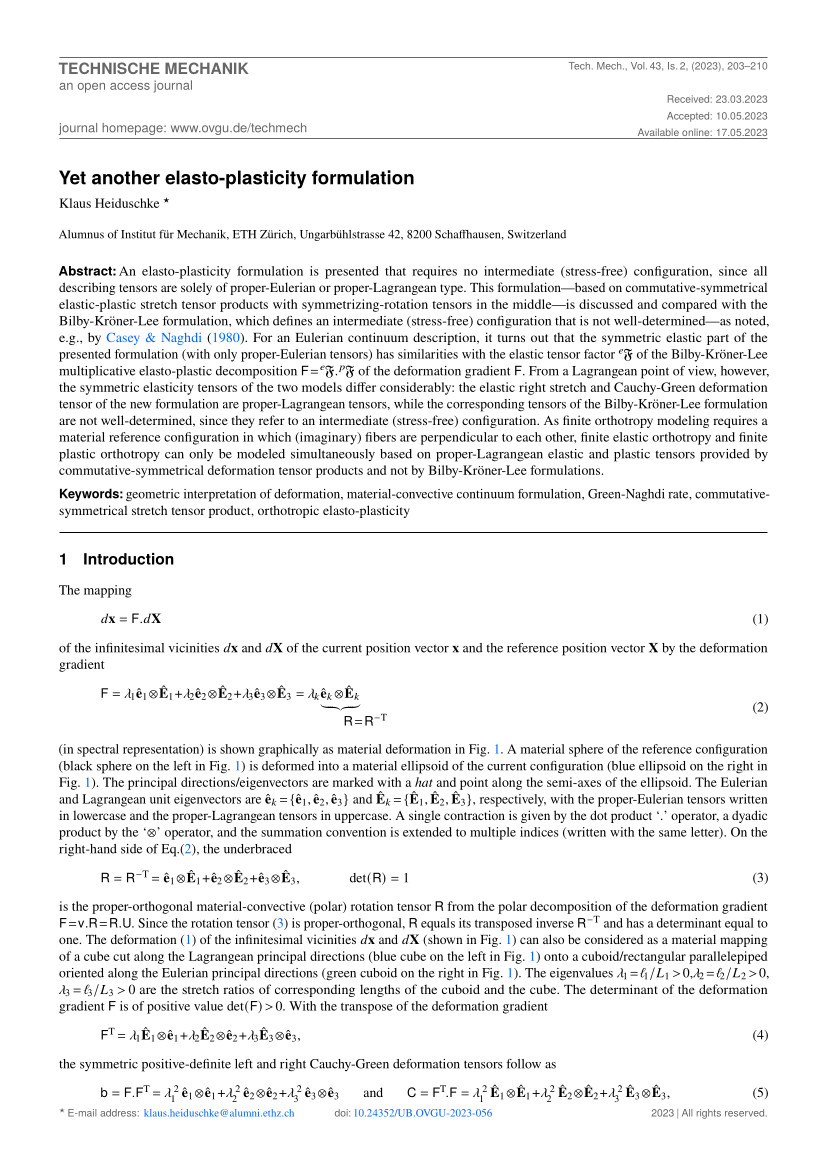Yet another elasto-plasticity formulation
DOI:
https://doi.org/10.24352/UB.OVGU-2023-056Keywords:
geometric interpretation of deformation, material-convective continuum formulation, Green-Naghdi rate, commutative symmetrical stretch tensor product, orthotropic elasto-plasticityAbstract
An elasto-plasticity formulation is presented that requires no intermediate (stress-free) configuration, since all describing
tensors are solely of proper-Eulerian or proper-Lagrangean type. This formulation - based on commutative-symmetrical elasticplastic stretch tensor products with symmetrizing-rotation tensors in the middle - is discussed and compared with the Bilby-Kröner-Lee formulation, which defines an intermediate (stress-free) configuration that is not well-determined - as noted, e.g., by Casey & Naghdi (1980). For an Eulerian continuum description, it turns out that the symmetric elastic part of the presented formulation (with only proper-Eulerian tensors) has similarities with the elastic tensor factor eF of the Bilby-Kröner-Lee multiplicative elasto-plastic decomposition F = eF . pF of the deformation gradient F. From a Lagrangean point of view, however, the symmetric elasticity tensors of the two models differ considerably: the elastic right stretch and Cauchy-Green deformation tensor of the new formulation are proper-Lagrangean tensors, while the corresponding tensors of the Bilby-Kröner-Lee formulation are not well-determined, since they refer to an intermediate (stress-free) configuration. As finite orthotropy modeling requires a material reference configuration in which (imaginary) fibers are perpendicular to each other, finite elastic orthotropy and finite plastic orthotropy can only be modeled simultaneously based on proper-Lagrangean elastic and plastic tensors provided by commutative-symmetrical deformation tensor products and not by Bilby-Kröner-Lee formulations.

Downloads
Published
How to Cite
Issue
Section
License
Copyright (c) 2023 Klaus Heiduschke

This work is licensed under a Creative Commons Attribution-ShareAlike 4.0 International License.




